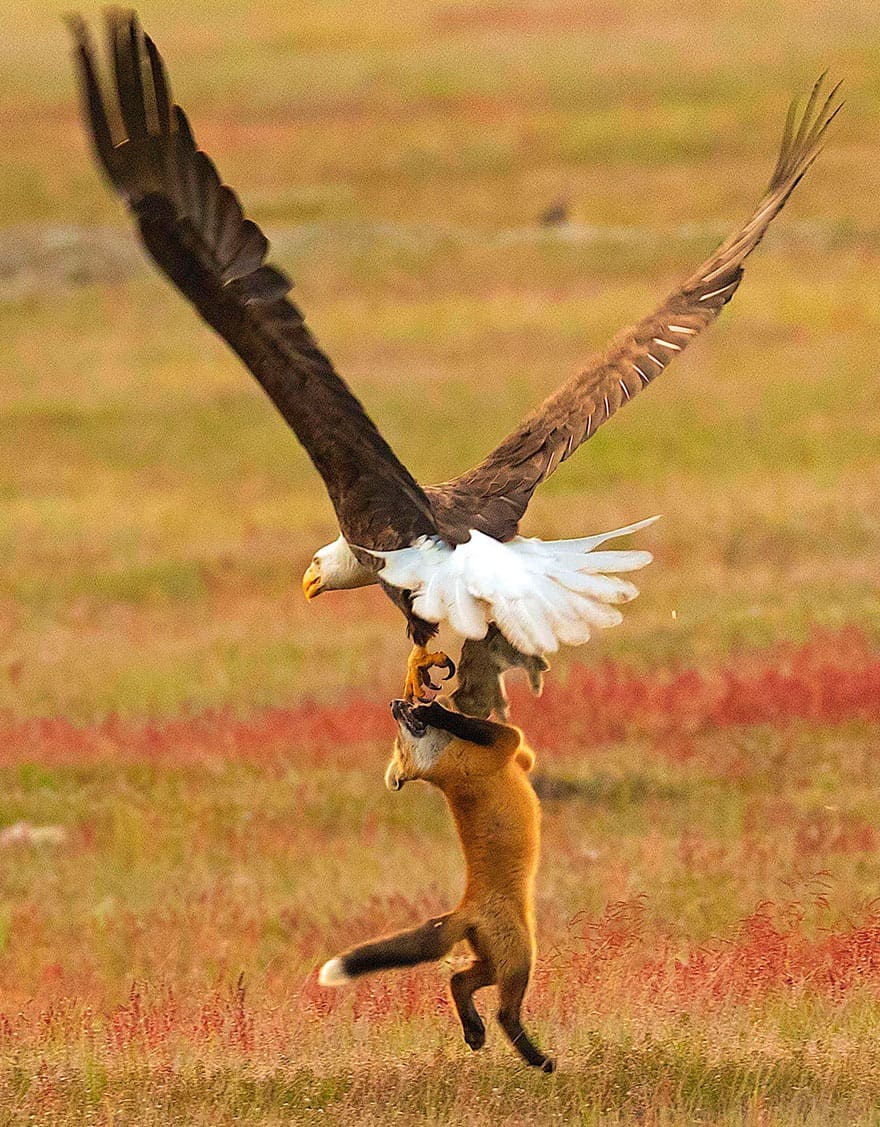ANIMALS
Rare Sighting Of Five Cheetah Brothers Swimming Across Flooded River In The Masai Mara

Searching for the moment when five Cheetah brothers swim across a flooded river. Wildlife is extremely fascinating and it frequently offers sights to behold. Such a rare moment was recently captured on camera by two wildlife photographers. Armed with a lot of patience and passion, Arnfin Johansen and Buddhilini De Soyza have witnessed an extremely rare sighting.
Five Cheetah Brothers Swimming Across Flooded River

Image source: Arnfinn Johansen
While on the Masai Mara Reserve, in Kenya to snapshot the Mother Nature in its purest way, the two were at the right place the right time to take some breathtaking images. The two photographers were on the banks of the Talek River, when a group of cheetah decided to cross flooded river.
The five felines, all brothers decided to swim across the river, despite its danger. They were not only swimming against the current, but the Talek river is also overpopulated with crocodiles. And even though cheetahs are the fastest land animals on Earth, the thing are completely different when swimming. According to the photographers, the five brothers all made it to the other side.
“A unique situation to witness made the perfect ending to the day,” the initial Facebook post reads. “When the five cheetah brothers decided to cross the flooded Talek River despite of high current and the danger of crocodiles. The three biggest were the first to cross, the two others followed a little while after.”
According to Femke Broekhuis – project director of the Mara Cheetah Project, “the Maasai Mara is one of the few remaining strongholds for the global cheetah population.” There are less than 7,000 individuals left in the wild…
Watch the Video here :
Source: getaway
ANIMALS
Amazing Video of Unseen Ocean Creatures in the Ningaloo Canyons

The Schmidt Ocean Institute recently explored the Ningaloo Canyons on the western coast of Australia using a robotic underwater vehicle called the ROV Sebastian. Check out the amazing video of what they discovered in the deep parts of the Indian Ocean.
More info: Youtube




ANIMALS
These Pics Are Art and the Artists Are Insects

Flying insects move so quickly that they are hard to follow, but new technology and some smart ideas have helped Spanish photographer Xavi Bou do just that. After spending 10 years focusing on birds in flight for his Ornithographies project, he turned his attention to insects.
For Entomographies, he uses high-speed video footage taken by Adrian Smith, an insect expert at North Carolina State University, to study and record how insects move. Bou then picks multiple frames and combines them into single images that show the fast movements of one or more insects through space and time.
With Smith’s help, Bou has captured the aerial tricks of wasps, the jumps of leafhoppers, and the fluttering of butterflies in amazing detail. He hopes that by doing this, he can make people more aware of the decline in important insect populations around the world.
1. Zebra longwing
This butterfly, which is common in many areas of the Americas, really fits its name. It can fly very high with just a few flaps of its large wings.
 Image source: nationalgeographic
Image source: nationalgeographic
2. Two-lined spittlebug
This insect, which comes from the eastern United States, is often seen as a pest because it likes to eat grass. Its springy back legs can make it jump into the air like a rocket.
 Image source: nationalgeographic
Image source: nationalgeographic
3. Yellow-collared scape moth
Unlike most moths, this North American species flies during the day. Its shiny blue-black wings sparkle in the sunlight.
 Image source: nationalgeographic
Image source: nationalgeographic
4. Ailanthus webworm moths
These tropical moths have spread farther north in the U.S. Because of their larval host, the invasive tree of heaven, they are now one of the most common backyard moths in the country.
 Image source: nationalgeographic
Image source: nationalgeographic
5. Common stonefly
Mostly found in eastern North America, this insect starts its life as an underwater nymph in forested streams or rivers. Then it leaves the water, sheds its skin, and becomes an adult with wings.
 Image source: nationalgeographic
Image source: nationalgeographic
6. Green lacewings
Eighty-seven species of this insect have been found in the U.S. and Canada. Since they eat a lot of unwanted plant pests like aphids and mites, they are often used to naturally control these pests.
 Image source: nationalgeographic
Image source: nationalgeographic
7. Grapevine beetle
This insect, fittingly named, eats the leaves and fruit of grapevines, both wild and farmed, but it doesn’t do much damage to the plants. As a type of scarab beetle, it often flies in a curved path.
 Image source: nationalgeographic
Image source: nationalgeographic
8. Oak treehopper and green treehopper
Treehoppers are known for their uniquely shaped pronotum, the part behind their head, which often looks like plant parts to hide from predators. They can jump well thanks to special muscles.
 Image source: nationalgeographic
Image source: nationalgeographic
9. Banded orange
This brightly colored butterfly can be found from Mexico to Brazil. Before mating season, male butterflies look for mineral salts, sometimes even drinking salty fluids from the skin, eyes, and nostrils of other animals.
 Image source: nationalgeographic
Image source: nationalgeographic
10. Sapho longwing
Longwings can live for 6 to 7 months, longer than most butterflies. This type, found from Mexico to Ecuador, has shiny blue wings, which is why it’s also called the Sapphire longwing.
 Image source: nationalgeographic
Image source: nationalgeographic
ANIMALS
Eagle and Fox in an Epic Midair Battle Over a Rabbit, Were Captured by a Photographer

Wildlife photography often depends on the perfect combination of good timing and the right place.
That’s exactly what happened when Kevin Ebi, an experienced wildlife photographer, captured an incredible battle between a bald eagle and a red fox, both competing for a rabbit meal.
In a detailed blog post, Ebi shares the fascinating series of events that unfolded while he was photographing foxes in San Juan Island National Historical Park, located in Washington state.
Ebi noticed a lively group of eight fox kits as they began their hunting lessons. Suddenly, they spotted a rabbit, and a thrilling chase ensued. Eventually, one of the foxes emerged as the winner, proudly carrying the rabbit across the field.
 Image source: Kevin Ebi
Image source: Kevin Ebi
Ebi shares what happened at that moment: “As I followed the fox with my camera, a sudden bald eagle cry caught my attention. It was swiftly approaching, clearly aiming for the rabbit. I quickly focused on the fox, anticipating a quick turnover of events.”
To Ebi’s astonishment, instead of a quick surrender, the situation turned into a intense fight in the air.
The eagle used its power to lift the fox and rabbit high up in the sky. Even while airborne, the fox attempted to break free by swinging back and forth.
 Image source: Kevin Ebi
Image source: Kevin Ebi
 Image source: Kevin Ebi
Image source: Kevin Ebi
 Image source: Kevin Ebi
Image source: Kevin Ebi
In the end, the eagle moved the rabbit to its other claw, causing the fox to let go. The intense battle came to an end in less than 10 seconds.
 Image source: Kevin Ebi
Image source: Kevin Ebi
For those worried about the fox’s well-being after the fight, Ebi reassures that it was not injured. The fox swiftly bounced back from the encounter and resumed its playful behavior with the other young foxes, showing no visible wounds from the aerial clash.
 Image source: Kevin Ebi
Image source: Kevin Ebi
 Image source: Kevin Ebi
Image source: Kevin Ebi
 Image source: Kevin Ebi
Image source: Kevin Ebi
 Image source: Kevin Ebi
Image source: Kevin Ebi

 GARDEN1 năm ago
GARDEN1 năm ago4 Easiest Ways to Get Free Plants

 DIY & CRAFT1 năm ago
DIY & CRAFT1 năm ago17 Inexpensive DIY Garden Walkway Ideas

 ANIMALS11 tháng ago
ANIMALS11 tháng agoAbandoned Cat Finds Happiness in New Home Despite Being ‘Too Affectionate

 GARDEN1 năm ago
GARDEN1 năm ago8 Amazing Coca-Cola Uses

 BATHROOM1 năm ago
BATHROOM1 năm ago24 Creative and Unique Bathroom Sink Ideas

 FLOWERS1 năm ago
FLOWERS1 năm ago6 Best Flowers That Can Propagate Easily from Cuttings

 ANIMALS10 tháng ago
ANIMALS10 tháng agoAmazing Video of Unseen Ocean Creatures in the Ningaloo Canyons

 BATHROOM1 năm ago
BATHROOM1 năm ago30 Clever Ways to Use Plants In Your Bathroom



















